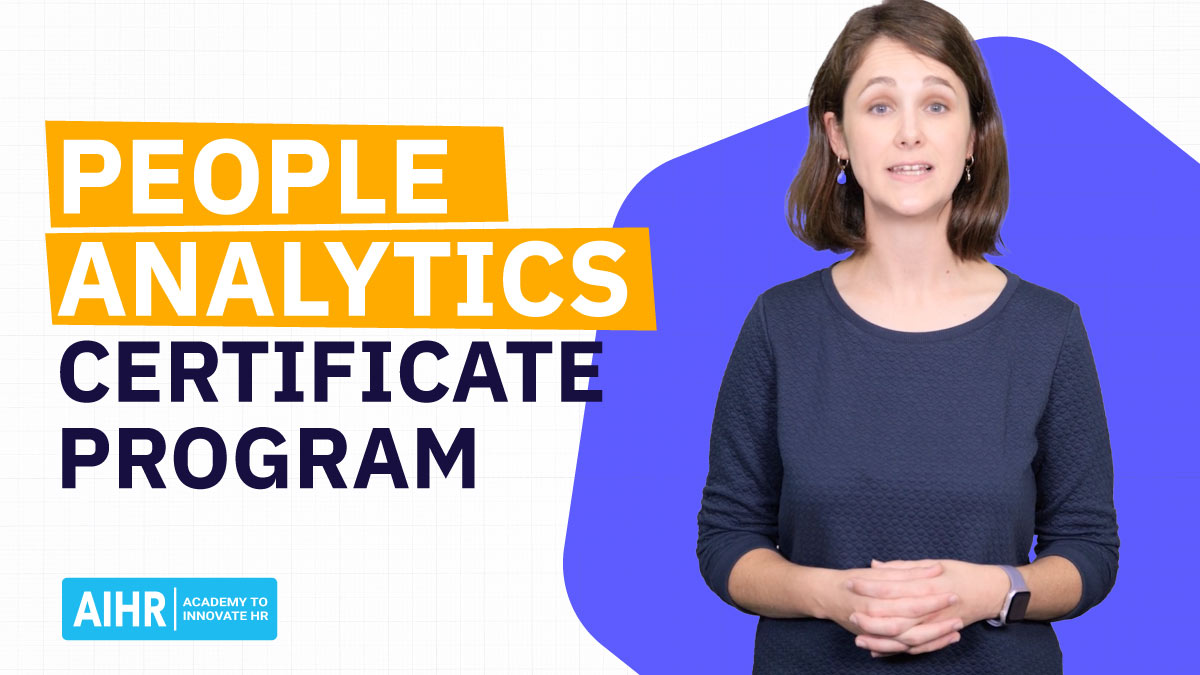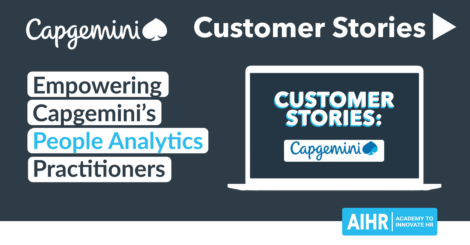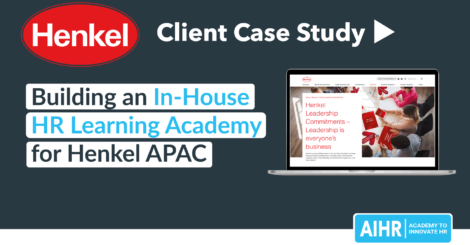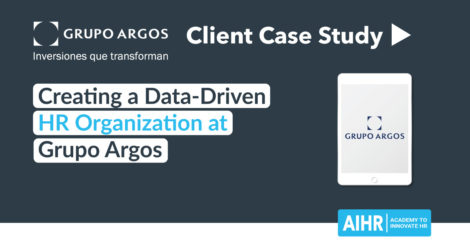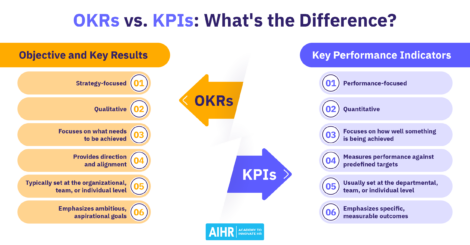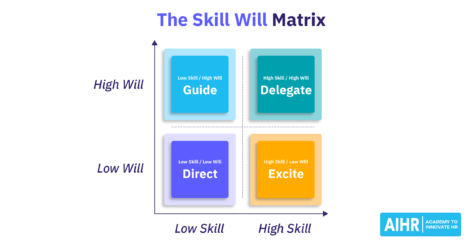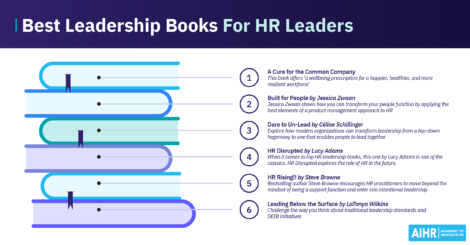Improving the HR Department’s Data Literacy
In this podcast, Matthew Hamilton, Head of HR Strategy and People Analytics at Proactive Life, speaks with HRchat. Matthew talks about Proactive Life’s mission to upskill their team and the role of AIHR in helping them develop data-driven and analytical skills.
Matthew gives insights into HR teams’ importance to foster data-driven culture and how HR teams can shift to being more strategic partners to the business.
In this podcast, Matthew discusses:
- The importance of data-driven and analytical skills for HR departments
- The four pillars of data-driven culture and how to implement them
- How People Analytics can help HR
Download our full guide to find out about our HR 2025 Competency Framework!
Transcript:
Bill Banham: Welcome to another episode of the HR chat show. I’m your host today, Bill Banham, and in this HR chat, we’re gonna consider improving the data literacy skills of the HR department. My guest this time is Matthew Hamilton, head of HR strategy, people analytics at Protective Life. As part of their mission to upskill their workforce, Protective life has contracted AIHR to upskill their HR professionals with analytical and data skills and help foster a data-driven culture. And we’re gonna talk all about these wonderful things and why more companies should be out there trying to upskill their people in this interview today.
Advertisement: What HR skills do you have to stay relevant? Join the Academy to Innovate HR to learn modern about relevant HR skills, all 100% online and self-paced. Visit AIHR.com to find online training programmes on popular topics like HR, analytics, HR, digital learning and development, talent acquisition and organisational development, visit aihr.com and get the skills you need to hit your HR career goals.
Bill Banham: Matthew, welcome to the show.
Matthew Hamilton: Thanks. I’m excited to be here.
Bill Banham: So before we get going, why don’t you tell our listeners a bit about yourself? I believe you have an engineering background, how did you end up doing people analytics?
Matthew Hamilton: Yeah, so I definitely followed a non-standard path to get here, although that’s probably not too uncommon for people in the space. So I’ve actually started my career in the military, I was a military officer for eight years, and then got out of service and worked in aerospace manufacturing, I have an engineering degree by education, and was doing commercial aerospace manufacturing. And then ultimately, my wife and I wanted to relocate and so I found my way into banking, into HR, leveraging that that military background for the leadership skills. And it’s funny, if we had talked eight years ago, I would have sworn to God to you that I would never work in banking, I’d never work in insurance, and I’d never be an HR. And now I’ve checked all three of those boxes off in the last eight years. But I had made my way to HR and then that kind of created the pathway into people analytics, the company I was with at the time was looking to expand the data driven capability of HR. And it’s kind of a joke, but not too far from the truth that the executive looked around internally and eyes on me and said, well, Matthew, you understand math, you have an engineering degree, a lot of HR folks don’t really understand math very well. So come figure this out and come make it happen. So that was kind of my pathway into people analytics. And it’s, it’s just kind of set with me, it’s kind of found been the niche that I found career-wise, which has led me to do this.
Bill Banham: Okay, wonderful. Gosh, that that is a that’s an unusual background, certainly, to get where you are now. But why is it important? Do you think for HR to have data-driven and analytical skills? Matthew? Does everyone need to have them at this point in 2020? Right, yeah. Does everybody pretty much need to understand the basics of data to be able to? I don’t know, find that conduit who can connect your people somewhere in all of the streams of data or help projects, business patterns over the next 612 months? Should everybody have some degree of data analytical skills at this point?
Matthew Hamilton: Yeah, so the quick answer, I think, is yes. All HR professionals need to have some level of data fluency or data literacy. If you take a step back and look at the function of HR, I don’t think a lot of people would disagree with me that HR kind of lags behind other business functions in terms of being analytical being data driven. Sort of the nature of the work, historically, HR has just been a much more transactional type function, you know, go hire people for me, go handle performance management and compensation and payroll and terminations and all that. So it’s been a very transactional focused type of function and has lagged other things like sales and marketing, for example, in terms of starting to leverage more data. But a lot of HR organizations have started to shift over the last decade or two and to be more strategic partners to business and sort of an implied part of being strategic partners to come with facts and data to the business leaders you support. And so there’s there started to be this movement, where HR as a function realizes they need to be more data-driven, more analytically rigorous, and so what does it take for the function for the organisation to be able to do so that the people have to some degree be data-driven and how they approach problems. And I do think it’s important for all HR professionals to gain some level of acumen, obviously, different roles may have more or less of a need. But there’s research out there, you know, Deloitte, I think has some research where they the level of maturity of analytics maturity within an HR function is really related to the gap between your analysts and your HR practitioners overall. So what they kind of mean by that is, if you hadn’t if you had a crack team of, of HR analytics, just the analysts themselves who are really good and understood this, if the rest of the org, the HR practitioners, the rest of the organisation doesn’t understand what they’re bringing to them, you might as well not be doing any of this, you really lose the capability if things are lost in translation between your small number of analysts and your broader team of HR practitioners. So that’s why it really is important that the broader base of HR practitioners has that level of data literacy. It’s not that we want every HR practitioner to be an analyst, but they got to understand they got to be able to consume the data-driven insights that are being brought to them, so they can help translate that to your business leaders.
Bill Banham: Okay, and your role in helping them do that, of course, is very, very important if you join Protective Life to help them build data driven capabilities in their HR department. Tell us more about that process. How did you implement the so-called four pillars of a data driven culture?
Matthew Hamilton: Yeah, so this is kind of my second go at doing this. I had been the initial people analytics manager at the company I was at prior to Protective Life and last year got recruited away. So I came into this, knowing a little bit of the path to follow already. I was pretty transparent as I was interviewing for the role of the direction that I intended to take us if I joined the company. And so when I came in, I kind of focus and I repeat this message a lot to our HR team, I focused around what you mentioned there, the four pillars of a data driven culture. And I would like to claim the origination of that, but I can’t. It actually comes from a writer and analytics writer named Brent dikes, who writes for Forbes, not just about people analytics, about just analytics in general, but it really is applicable in the people analytics space. So the four pillars of data driven culture, he says is the mindset, the skill set, the toolset and the data set. So if you think of the third and fourth one there, the toolset in the data set, that’s really sort of the infrastructure of being able to do people analytics. So there’s a lot of HR data out there, but it’s got to be organized in a usable fashion, that’s got to be clean, to some degree, it doesn’t have to be perfect, you got to have a tool to do this with, you know, Excel is for as much power and as powerful as it isn’t things you can’t with Excel, it’s not a scalable tool for people analytics. And most HR professionals don’t have the skills to do the very advanced things with it. So that’s sort of the infrastructure side. So I came in knowing that we were going to need to clean our data and implement a platform. So that was sort of one path we went down was, was getting a pure-play people analytics solution platform to do this on. But then concurrently, I was going down the first two pillars, the mindset, and the skill set. And that’s where we really started the upskilling, and the education, the socialisation of the concepts for HR professionals, sort of in parallel with getting the platform to do these kinds of analyses, to work towards those things that we talked about before just having a common shared understanding of our HR data. How is it being generated? Where does it come from? What does it mean, terminology and making sure people are on the same page when we say when we’re talking, we use the word turnover? What exactly does that mean? Because there’s a very specific definition of what turnover is, but unfortunately, when people aren’t speaking from a shared common language and understanding that it’s not uncommon for them to be speaking about two different things in their minds, but they’re using the same word. So that was sort of, you know, the path that I set us on when I joined the company to curtain at the same time and parallel build the people skills, the mindset and the skillset, as at the same time that we’re building the organisational capability and infrastructure, the toolset and the data set of analytics.
Bill Banham: Okay, thank you. Now that we mentioned that you guys have recently started using the Academy to innovate HR, I’m currently a student of HR myself. So I’m going through that journey too. When it comes to mindset and skill set, the specialized training that you’ve opted for maybe you can tell us a bit more about that, why you decided to go for it? And what are some of the hope for outcomes?
Matthew Hamilton: Yeah, so. So when you kind of look at building that capability in people, in addition to all the other things, as you mentioned, in the intro, I’ve got responsibility for HR strategy and people analytics, and then kind of the part that’s named in there, but I have the HR technology, ownership of the HR technology, so the HR s team reports up to me. So there’s just the issue that I think all fashional spaces have a bandwidth of time and capability to do different things. So and I’ve got a very small team dedicated specifically for people analytics, so I needed to leverage other minds and content that was out there. The team that we have, is not trainers, either think corporate trainers, right? So there’s a good degree where we can help train people, but we’re not trained ourselves as trainers to develop, you know, instructional design, to develop content. So, you know, so I’ve kind of faced with, well, there, there is a lot of great content out there. That’s, that’s available from lots of different sources. And to some, to some degree, we do use some of that we share, you know, if we come across great articles or different things online, we will share that content. Because it can be useful. But the problem from a sort of a big picture learning pathway view is that that when you do that, it becomes a work effort on us to build out that learning content, which is what we just really don’t have a lot of time for. But then the other problem is that I think the user experience the user side of it is that it creates sort of this hodgepodge of different content that may be good in and of itself, but there’s no sort of a central through-line, a common theme to it. So it becomes harder really, for some of those things to click in the learner’s mind because it wasn’t designed coherently if you will. So that was one thing where we just started to look, well, what are the sources out there where we could get sort of comprehensive training in the space from, and there’s, there’s really not a tonne out there. You know, there’s a handful, but there’s not a tonne. Because this people analytics is sort of a budding field. So there are just not as many resources out there. And I had been familiar with Academy to innovate HR. Back when it was HR was analytics, and AIHR literally started as a blog out there. For their founder, Eric van Vulpen and I followed him online for several years. So it’s kind of already aware of the space. And then that’s what led me back to them once they had built out the more formalized training component. So it’s kind of already comfortable and familiar with them being experts in the space. So that’s kind of what led us to leverage their learning content to build our team’s capabilities.
Bill Banham: And this is, I recently interviewed Eric actually. So by the time this show gets released, Eric’s show should also be out there, so you should totally check it out. As a follow-up to this conversation today. The question for you, I’d love for you to offer a couple of examples of how people analytics can help or enhance HR. So we’ve spoken about that a little bit so far, but maybe you can offer some real practical examples now. So that some some some teasers may be to get our listeners thinking, Oh, man, if I had that skill set, or if I, if I applied my knowledge in this way, it could really I don’t know, save me time helping my budgets. Help me understand who my top performers are met. Perhaps you can share a few examples there.
Matthew Hamilton: Yeah, yeah. So so I think definitely the specific examples can be very unique to different companies. I mean, there’s definitely themes that companies Bass, you know, retention issues, compensation issues, performance issues. So these are the matters that are common everybody, but the specific challenges that each company face are, are unique to them. And I would throw out for any of your listeners who are, you know, early in the phases or even not even really started down their people analytics journey, you really do want to consider what your business needs are and help that it leverage that to help you drive going down this path. Because you don’t want to go solve a problem, that’s not a problem or solve a problem, not on top of your CEO’s mind. You’re not going to get a lot of momentum if you’re solving problems that your CEO doesn’t feel her big issues. I didn’t kind of think about this in advance but I wanted to throw out just a few examples that may be timely, relevant to people. So we’re recording this year in November of 2020. With the global COVID pandemic going on. And so we’ve had a few things that we’ve implemented, as in the grand scheme, not very complex analyses. But relevant and timely, important. So one of them was back when, when infection rates started going up. In the United States back in March was when it kind of hit our state, we very quick quickly transitioned our workforce to work from home we’ve had for several months now we’ve had 95%, or more of our company working remotely, which is from a business standpoint has worked very well. For us. One of the impacts that we’ve seen, though, is that people weren’t using their time off as much, we exited the office pretty much the week before the most planned Spring Break periods were. So we saw a lot of people canceled their spring break plans. And in the first few months of the pandemic, we saw people using a lot less of their paid time off. And then our company policy lets us roll a certain number of hours over into the next year. But not all of them. If you don’t, if you’re over that limit, you’re going to lose your paid time off. And so we undertook an analysis that we kind of refreshed every month here to see well, how far behind are we compared to a normal year. And in the early part, we use that to adjust our policy, and how we handle the transition from 2020 into 2021. The company’s concern was well wouldn’t want to just buy out everybody’s unused time, because that’d be a very quick significant financial hit to the company. But we also didn’t want to do anything that didn’t accommodate the employees at all, because that would negatively impact them. So we were able to find sort of that fine line in between to adjust our carryover policy so that it could, you know, create the best scenario for as many people as possible without negatively impacting the company’s financials. But then also encourage employees in the remaining months of the year to utilize their time off, right. There’s an aspect even if you can’t go do a lot to have that mental health break, to just unplug and unwind for a little bit. So that’s one related to the pandemic. The other that we’ve been looking at is retention patterns. So we’re not, I think we’re not dissimilar from probably most companies out there, and that we’ve seen our voluntary turnover and specifically our resignation rate go down steadily throughout the pandemic. And it’s not surprising, right, the job market out there isn’t the best a lot of companies are closing or furloughing employees, reducing hiring plans. So there are not as many roles to move into. So people are leaving jobs less frequently. So on one hand, that’s a good thing, right, our retention is better throughout the pandemic. But if you only looked at that at a top line for the company, what that’s going to do is sort of hiding outliers, potentially could hide outliers underneath that. So we started disaggregating with our retention data, and looking at different groups of people to not just understand the resignation patterns of the company as a whole, but within specific types of jobs, parts of the company. And what we did see was that at least early in the pandemic, it’s sort of normalized now, but at least early, we actually saw that while our resignation rate was decreasing the resignation rate of our high performers, so people with the highest ratings on a five-point scale. So our high performers were resigning, their rate was not decreasing. And it was actually in decreasing at first, which if you think about it, again, it’s not surprising that if there’s not a lot of jobs that are being hired for all the people who are high performers at one company are probably going to be the candidates who are more competitive to get the fewer jobs that are being hired for. But that led us really focus on that group of people. And it has as I said, it’s kind of normalised now and we don’t see that disparity. But it could have been a big surprise that came at us that we, that we weren’t prepared for if we hadn’t been able to do that kind of analysis. So there’s a whole lot of other examples. We can talk about this for a long time. But there’s just a couple that we’ve done in the recent months here, that others maybe look at other companies may well be looking at that for themselves also. But to go back to what I initially said, the specific use cases for using data in regards really needs to be very specific and focused on a company’s specific challenges or issues that they’re trying to work on.
Bill Banham: Okay, awesome. And for those people who maybe do want to hear more examples, get more insights from you, how can they connect with you, personally? And also, how can they find out more about the company?
Matthew Hamilton: Yeah, so probably the best way is, just look me up on LinkedIn is I’m not too much of a social media maven, but I’m on LinkedIn. And then my company, the website is the best place to learn more about our company.
Bill Banham: Wonderful. Well, that just leaves me to say for today, Matthew, thank you very much for being a guest on this episode of the HR chat show. Yeah, thanks for the time. I appreciate it. And listeners. As always, until next time, happy working and stay safe. Thank you for listening to the HR chat podcast brought to you by HR Design.




